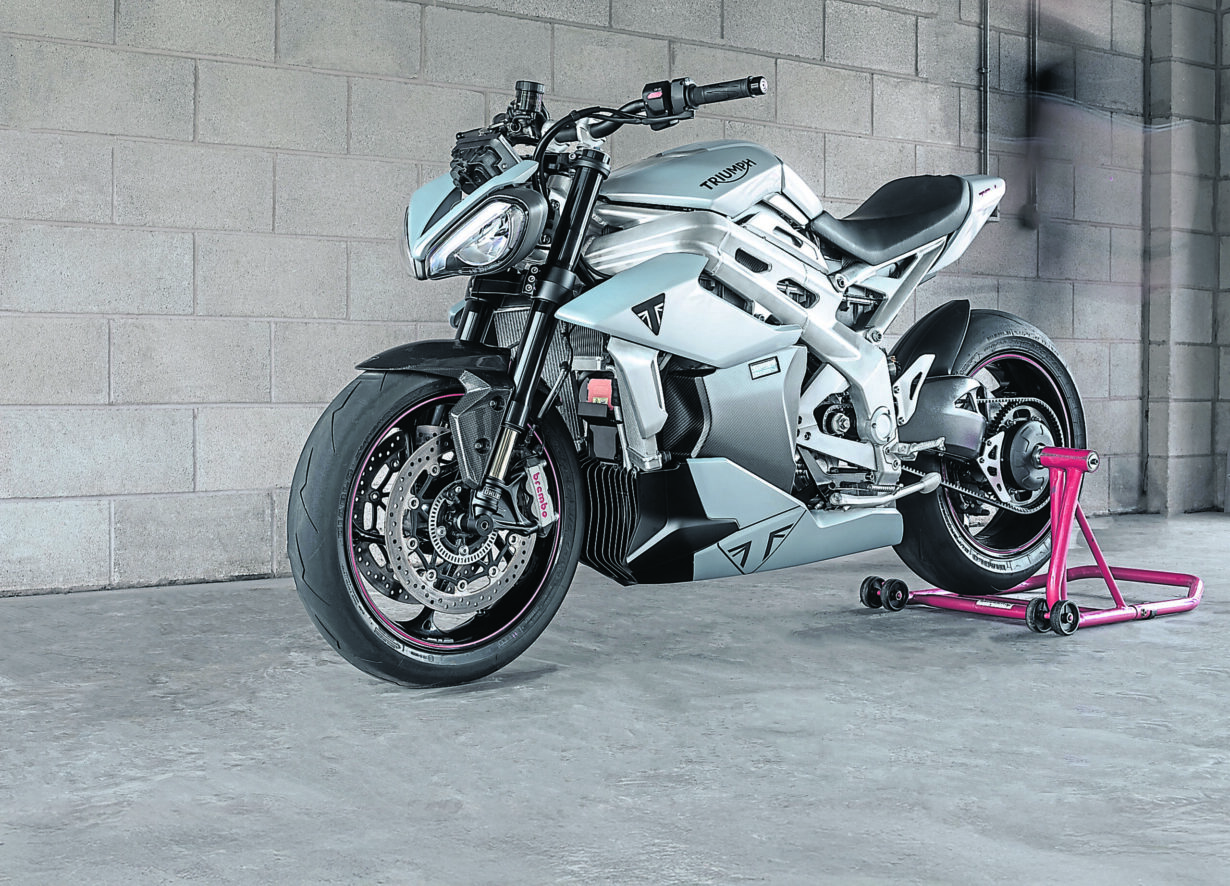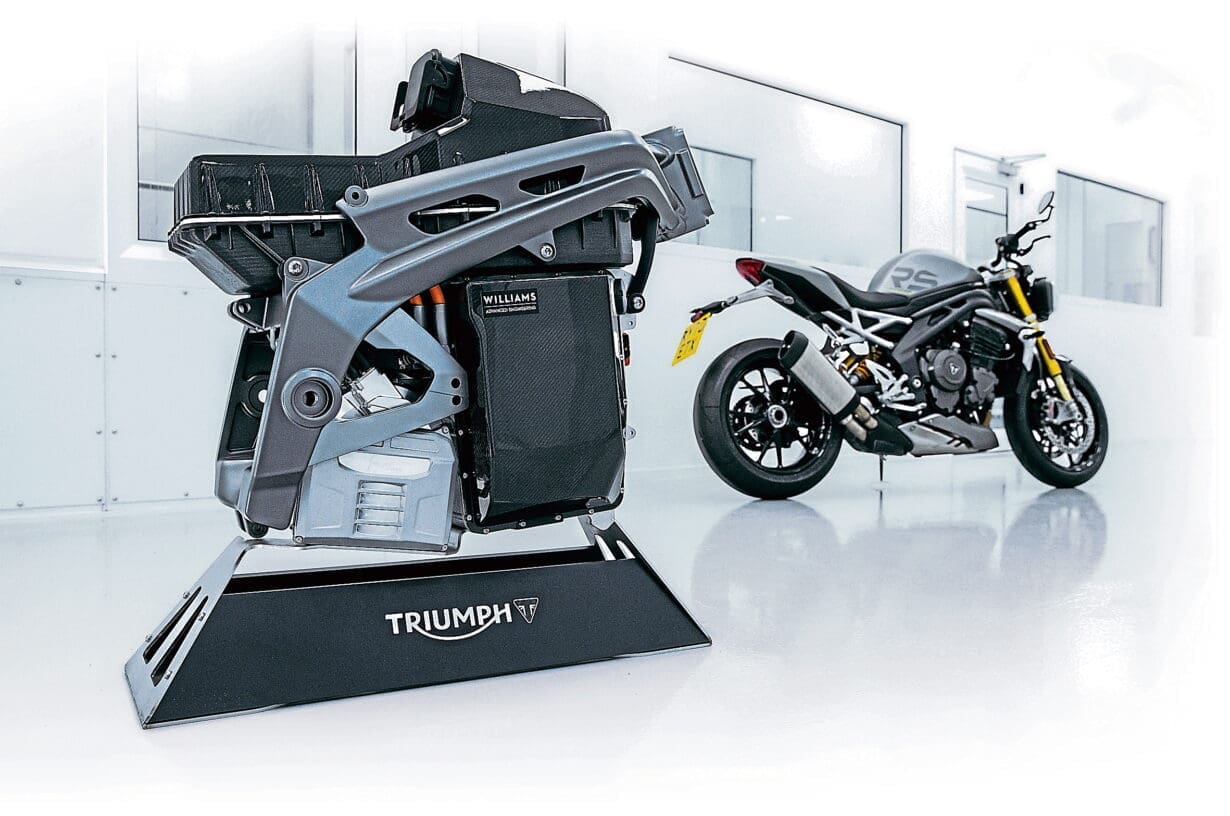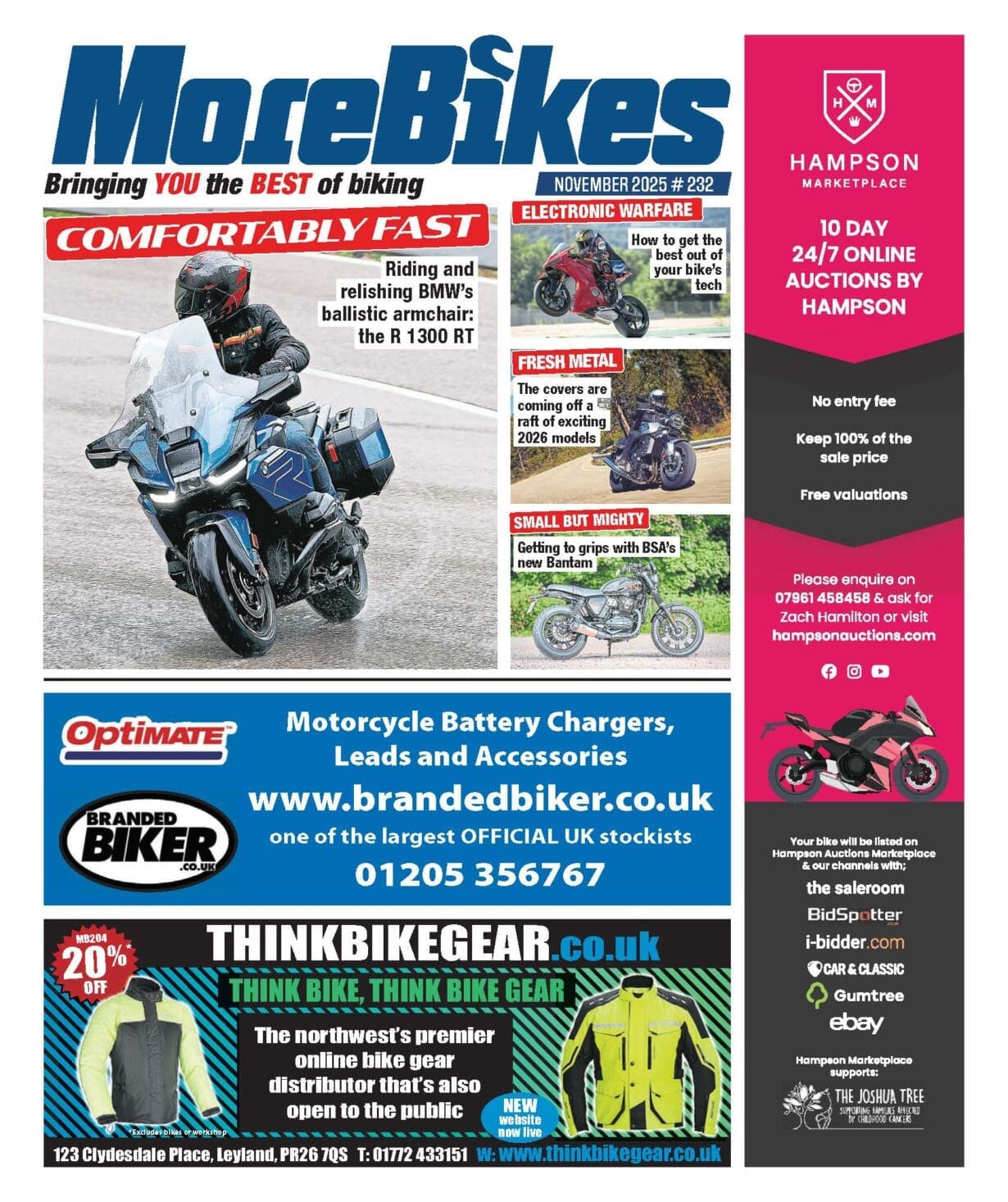Alan Dowds introduces Part One in this series looking at Electric Bikes:
It’s not been a straightforward change, but electric power has become essentially mainstream in the car world. Where I live, in SW London, battery-powered four-wheelers are everywhere, with even the recently-cursed Tesla brand a common sight. Add in hybrid designs, with both electric motors and internal combustion engines, and you’ve got a big chunk of the cars sitting in the traffic jams inside the M25, and beyond.
You probably don’t need me to tell you that the bike world is some way behind the curve when it comes to this changeover. If you exclude 125cc and below urban mobility scooters and bikes, the battery-powered market is moribund in the UK.
Enjoy everything More Bikes by reading the MoreBikes monthly newspaper. Click here to subscribe, or Read FREE Online.

In February 2025 – admittedly a quiet month at the best of times – the Motorcycle Industry Association (MCIA) reported zero registrations of electric bikes with power outputs over 11kW (15bhp). Absolutely no ‘big’ bikes sold in the entire four weeks, in other words, with just 123 electric 125cc/moped-equivalent bikes plated. And that’s not an outlier: annual sales figures for electric bikes have slumped in the past two years.
The reasons behind this are many and complex, but they break down into a couple of main categories. First, the technology doesn’t presently exist to produce an equivalent electric version of a BMW R1300 GS, a Kawasaki ZX-10R, or a Triumph Speed Triple. The weight, size and cost of even the best battery packs in 2025 just can’t match petrol power. If you want a bike to make 150-200bhp, weigh in around 200-250kg, cost less than £20,000, and have a range of 150-200 miles, it’s simply not possible.
It’s relatively easy for a car manufacturer to ‘hide’ a 300kg lithium battery pack which costs £10k and is the size of a few large suitcases inside an 1800kg, £60k SUV, especially when you’re replacing a big multi-cylinder petrol or diesel engine, with gearbox, with much smaller and lighter electric motors. But the engineering just doesn’t add up on bikes. Indeed, Steve Sargent, chief product officer at Triumph, told the recent MCIA conference about the lessons learned from the firm’s prototype electric TE-1 bike. Sargent said that a battery-powered Speed Triple is impossible with current technology and budgets. And without one of those big, heavy, pricey batteries, you simply can’t have the 200-mile highway range which most bike owners seem to regard as essential (despite most of their journeys being much shorter than that).

Another big technical problem is fast charging: electric motorbikes can’t use the new high-powered superchargers used by the latest Tesla and other cars, which deliver hundreds of kilowatts of electrical power. Charging at those rates needs special battery management circuitry, as well as powerful battery pack cooling systems to avoid damage – which adds even more cost, size and complexity to the units. There’s also a scaling problem – if your battery is smaller to start with, you can’t simply use the massive charging rates used on giant car batteries.
As an example, a new Polestar 4 car has a 100kW/h battery pack, which is nearly six times the size of the 17kW/hour battery on a Zero bike. The Polestar battery can be charged at a rate of up to 200kW, filling it up from 10-80 per cent in half-an-hour – acceptable for most folk who are happy to stop for a coffee when on a longer journey. A 200kW charger would fill up the much smaller Zero battery in less than 10 minutes, but current tech isn’t able to manage that firehose-level of charge surging into the cells. As it is, the maximum charge rate of the top-end Zero SR/F is 12.6kW (with the £2.5k optional fast charger kit), meaning more than an hour for a 0-95 per cent charge.
The other problem – perhaps an even bigger one – is in the minds of us, the great British biker. Most of us, it seems, are wedded to the noise, heat, vibes and character of petrol-powered machinery, for good or ill. That’s partly because they work very well – a modern bike engine is a marvel of power production, compactness, light weight and efficiency. As an aside, it’s ironic that the bikes which are closest to being replaced by battery power – small petrol motorbikes and scooters made to Euro 5+ standards – have a microscopic impact on the environment, with huge 100+mpg fuel economy and super-clean emissions from the exhaust.
The difference made by forcing all of these to convert to battery power is frankly minimal. Indeed, the environmental impact of converting every petrol motorcycle in the UK to a battery-powered unit would be a tiny fraction of the overall transport emissions picture.

It’s arguable that the Government should ignore bikes in terms of ‘decarbonisation’ legislation as a vanishingly small problem, which can be ‘fixed’ (inasmuch as it needs to be) over a much longer term. By all means, keep legislating for new petrol-powered bikes to be cleaner and more efficient, but allow them to be sold beyond the planned cut-off dates for new internal combustion powered cars (currently 2030/35 but under review as we speak).
The other part of that mental challenge to battery power is less rational and more psychological, and it’s tied to the demographics of motorcycling. Take a look around any bike meet, from Box Hill to Knockhill BSB, the NW200 to Hunstanton seafront, and you’ll see, broadly, a load of old men. Which is the group least likely to believe in man-made climate change, and the associated need to reduce fossil fuel use. Ask 100 of these typical bikers if they feel the need to move from petrol to battery power, and you’ll get a wide range of responses, from unkind jokes about Greta Thunberg, to memes of burning cars and wind turbines, ending up with something about private jets at Davos.
Finally, there’s a real cultural heft to bike engines, weird though that sounds when you type it out. There’s meaning, nostalgia, heritage and passion all tied up in these lumps of steel and aluminium which we grew up lusting after, fixing, tuning, servicing and blowing up. Post a picture of a Suzuki RG500 two-stroke engine in a motorcycle social media channel, and watch the reaction. Ditto the Honda NR750, Yamaha RD350LC, Kawasaki Z1, Ducati 916 – even the Honda C90 single will bring out the love. Replacing that entire culture with the lore of AC permanent magnet motors, three-phase AC controllers, performance battery management systems, high-power semiconductors and the like is going to be a hard sell.
NEXT MONTH
We look at the potential solutions for the electric bike world. How can we bridge the gap between now and a possible petrol-free riding future?


